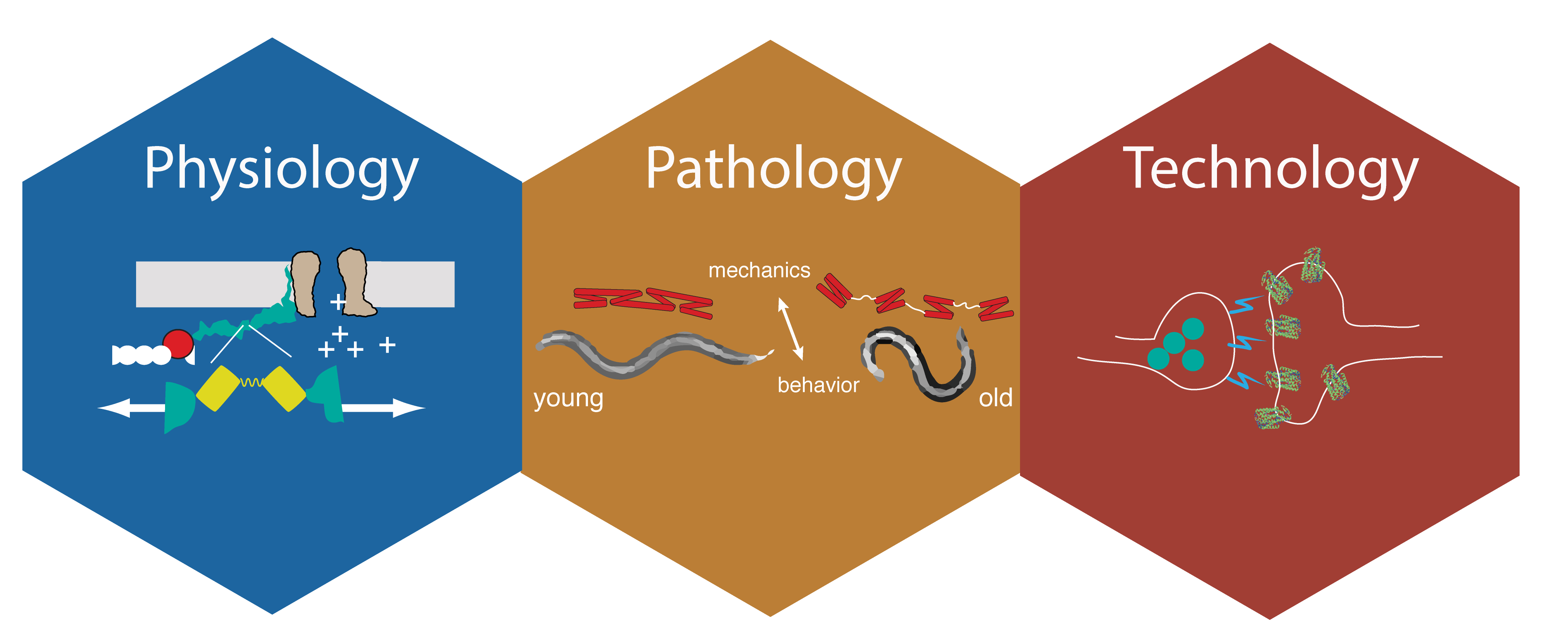Welcome to the lab of Neurophotonics and Mechanical Systems Biology @ ICFO. We are located in the outskirts of Barcelona on the campus of the Technical University of Catalunya (UPC). Riding on the back of a little nematode worm, our work settles at the interface of biology, physics and engineering to understand how the mechanical properties of biological materials enable functional animals.
The overarching goal of our research is thus to
1) Identify a unifying principle of mechanosensation and the importance of the physical properties of cell in the process of converting mechanical stress into cellular and organismal behavior.
2) Obtain a comprehensive understanding of how a change in the structural components of a cell lead to a change of their mechanical properties. Because the mechanics of a cell is an emergent properties of the sum of all individual molecular interactions, this knowledge will provide a mechanistic insight into diseases involving a failure to respond to forces.
3) Translate the answers to the fundamental questions above into therapeutic technologies limiting presently intractable diseases, that are based on a failure to sense, interpret or otherwise have a pathological consequence of mechanical stresses.

Physiology
Every animal has the ability to sense their surrounding, similar to how we sense our surrounding when we wander through town. Specialized sensory cells embedded just below the surface of our skin detect minute mechanical stimuli, when we touch our environment? Similar, specialized mechanosensors embedded deep inside our tissues get activated by every breath we take and every beat of our heart. But HOW do they actually sense external and internally generated stresses? And how do they remain resilient in the face of continuous mechanical simulations, without failing to respond to them until we take the last breath?
Pathology
A failure to cope with and correctly interpret mechanical stresses is linked to a number of diseases including peripheral neuropathies or dementias. An occupational exposure to repetitive mechanical stress has been linked to the etiology of Alzheimer’s, suggesting that stress protection mechanisms have to be in place that provide our central nervous system with resiliency. Despite this importance, we do not know the mechanisms that allow neurons to remain functional in face of continuous deformations, due in parts to the lack of tools that detect forces and deformations within a living cell or organism. Importantly, recent technological advancement in imaging and force measurement technologies provided a paradigm shift in our understanding how molecular machines assemble into cells: We are beginning to obtain experimental access to the fundamental molecular mechanisms that govern the assembly of a functional organism – on the level of a single molecule in a living animal.
Technology
Now that we have the tools in hand to investigate the molecular changes during diseased conditions, we also need tools to revert and alleviate these disease processes. The chromic exposur to mechanical stress, for example, might disrupt synaptic contacts, leading to a steady decline in neurotransmission. In order to alleviate this loss of neuronal communication, we seek novel optogenetic methods to overcome abberrant synaptic transmission.

Come in and find out!





